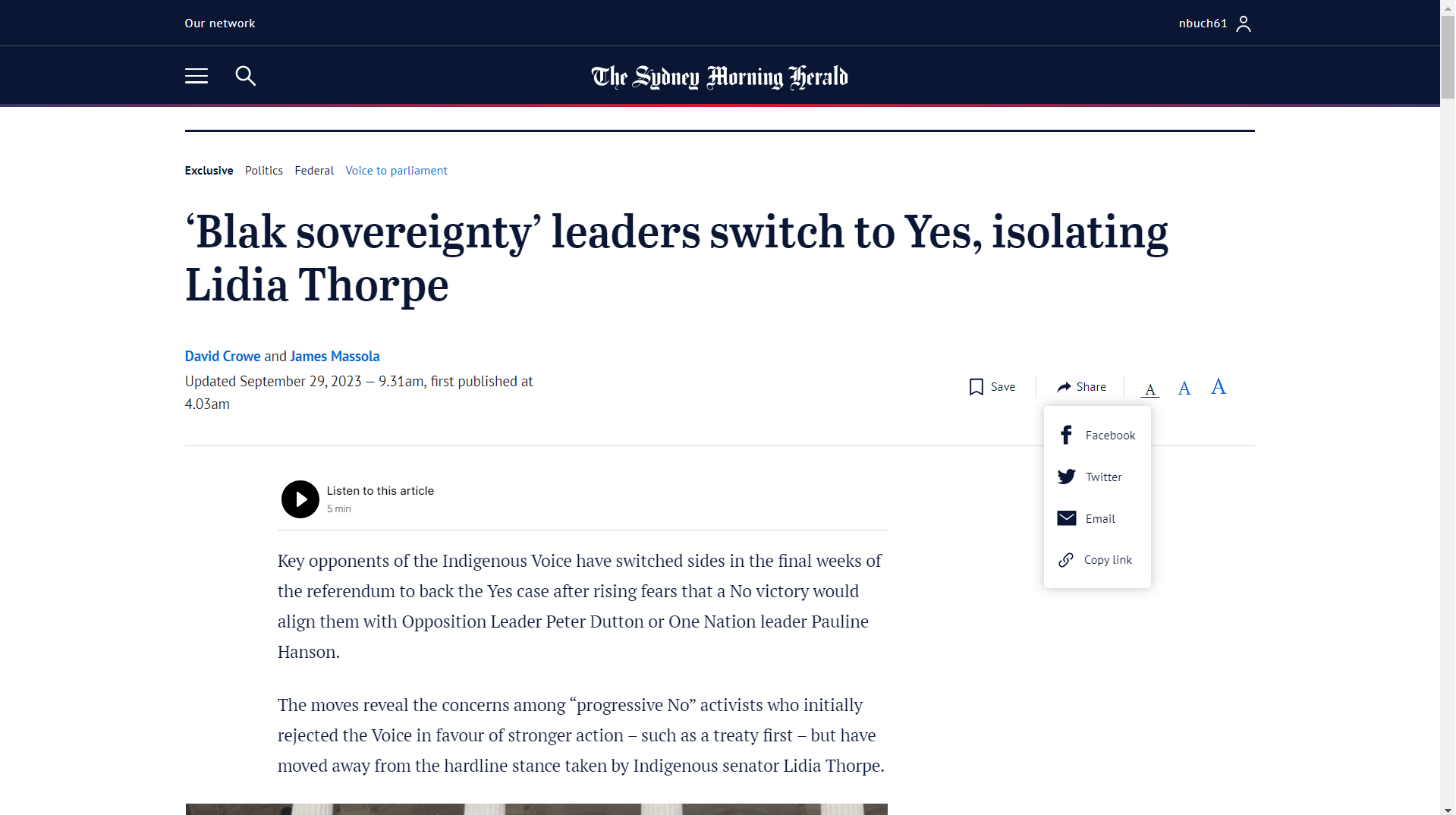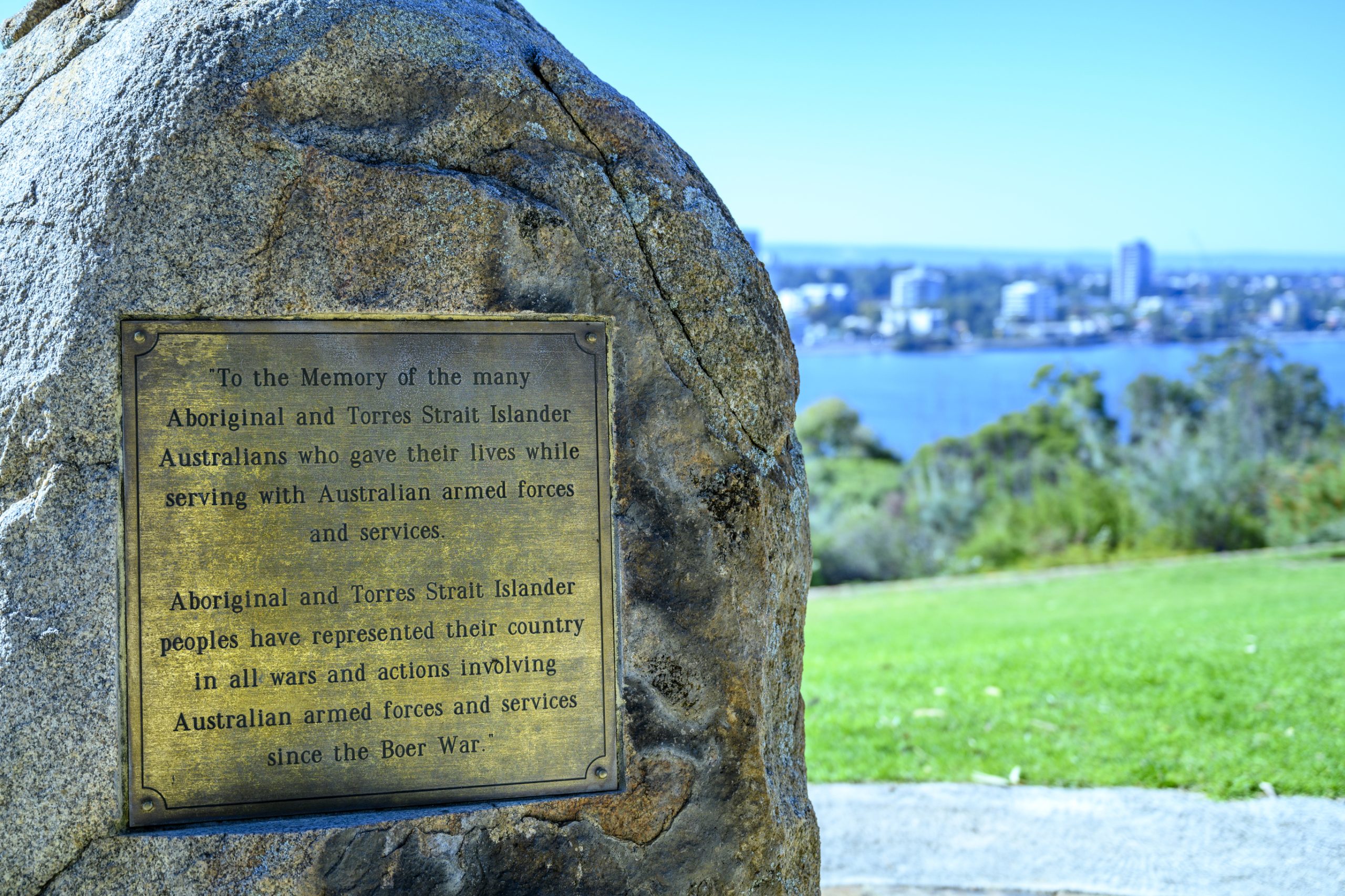Dear friend,
You are intending to vote ‘No’ in the upcoming referendum, and yet I call you ‘friend’. I have no animosity to those who wish to vote ‘No’. The purpose of my open letter is create some awareness in your consideration of the vote, one way or the other.
There are many contentions on the motivations in both ‘Yes’, and ‘No’ campaigns. Truths, Lies, and something in between. I will focus on where the big energy comes from in the ‘No’ campaign, which only a smaller section of the population understands: these are those who have studied and read Australian politics seriously. Opinions can greatly differ but there is a common outlook in the way the debates are ideologically structured. There is a consensus on the way the political game is played and the rhetoric used, and, indeed, why the rhetoric is mostly empty of credible ideas.
Where I come from, hopefully as a conversation, is that I have written and published on the culture-history wars in the United States and Australia, for some time. I am not important, but the message of my fellow colleagues, historians and sociologists, is. Let me explain the bigger energy of the ‘No’ campaign. Simply put, it comes as the ‘party’ – an intentional grouping for purpose – which desired to minimise the varying interests of Aboriginal and Torres Strait Islander voices. There is a spectrum here in Australian politics. From mere suspicion towards formal representational voices, with accusations of corruption and other malfeasance, to right-out political game playing to erode the representational power of ‘the other’. This does not mean other ‘parties’ are correct on other related issues. Let’s avoid the fallacy of ‘tit-for-tat’.
In order to explain what I have stated, there has to be a history lesson. The political contentions and social dissatisfaction began when the Federal Department of Aboriginal Affairs formed in December 1972 and continued to March 1990. In the beginning the bureaucracy had been built from Harold Holt Government’s 1967 Office of Aboriginal Affairs. It coincided with the changes in the constitution to count Aboriginal persons as ‘citizens’ but it did not make such persons ‘citizens’ as is the common misnomer. However, the difficulties of the bureaucracy extended from the pre-existing state departments in Aboriginal affairs. With few and minor exceptions, it was a continuation of white paternalism. A significant fact of the bureaucracy is that all such bodies were set up to help the Government to make special laws for the Aboriginal people.
The administration was flawed from the start. The Aboriginal and Torres Strait Islander Commission (ATSIC) was set up in 1990 and this is when the politics heats up significantly. For the first time, you had Government being guided by Aboriginal Australians and Torres Strait Islanders in a body chaired by Lowitja O’Donoghue (1990‑1996), Gatjil Djerrkura (1996‑2000), and Geoff Clark, (2000‑2004). ATSIC was controversial among conservative Australians, edged-on by rabid right-wing commentors. The agency was dismantled in 2004 in the aftermath of corruption allegations and litigation involving its chairperson, Geoff Clark. The key point being that ATSIC could have been reformed, but it was clear that both the John Howard Government and the Mark Latham Opposition wanted to get rid of the ATSIC model. Howard announced the agency’s abolition on 15 April 2004, saying that “the experiment in elected representation for Indigenous people has been a failure”. So much for believing in the “quiet liberal and white tradition.” A government-appointed advisory body, the National Indigenous Council, was appointed to continue to advise the Government, but it did not represent the heart and voices of the people themselves as a democratic model. It was an advisory board. Enter, then Uluru Statement from the Heart in 2017 and the proposed First Nations Voice to Parliament protected by the Constitution.
That is really all that the ‘Yes’ campaign is about, irrespective of what ‘parties’ of Yes voters otherwise want. It is for that reason I will vote ‘Yes’. It is understanding the wider history of Australian politics that we can see what is going on in the referendum campaigns. The key point is, if the referendum is not successful, there is no Plan B. If ‘the party’ of ‘No’ had wanted recognition of Aboriginal and Torres Strait Islander persons, it would have been done so in the last administration of the Australian federal government. Either we spiral forward with the imperfect, or the spiral takes a half turn back with nothing intended but the accidents of history. This is Australia’s opportunity.
*****
*****
My point on what is truly “radical” and what is duped, is shown in the reversal of thinking on the No vote for the October 14 election, but pleased that persons can come to their senses on how the political game is made or lost.
I welcome a Yes vote whatever the motivation. It is the balanced solution.
Featured Image: Monument in memory of the Aboriginal and Torres Strait Islander Australians who died in the service with The Australian Armed Forces. Located in Kings Park, Perth overlooking the Swan River. Photo 155899548 © David Massie | Dreamstime.com
Neville Buch
Latest posts by Neville Buch (see all)
- J. D. Vance’s Insult to America is to Propagandize American Modernism - July 26, 2024
- Why both the two majority Australian political parties get it wrong, and why Australia is following the United States into ‘Higher Education’ idiocy - July 23, 2024
- Populist Nationalism Will Not Deliver; We have been Here Before, many times… - July 20, 2024


